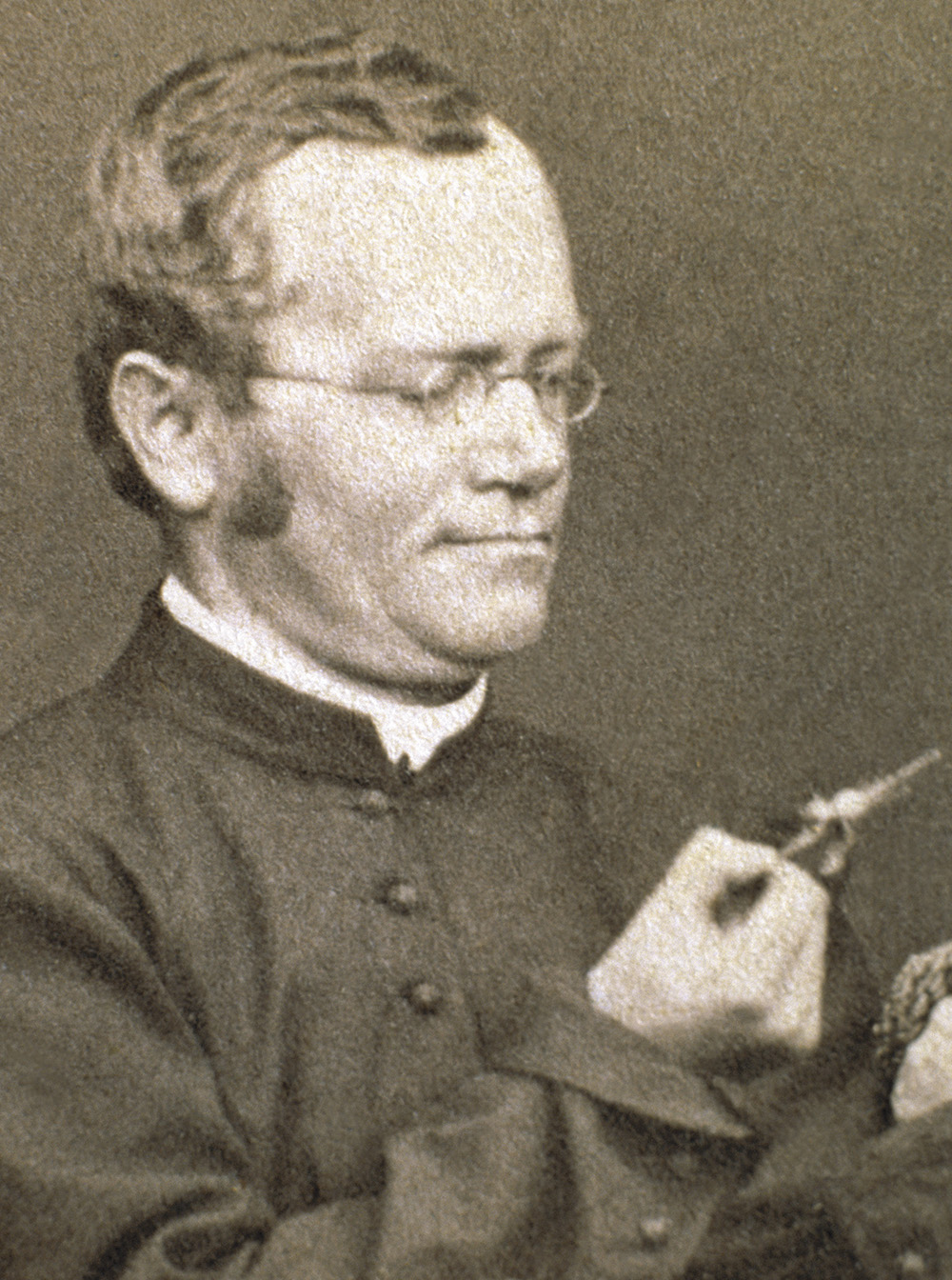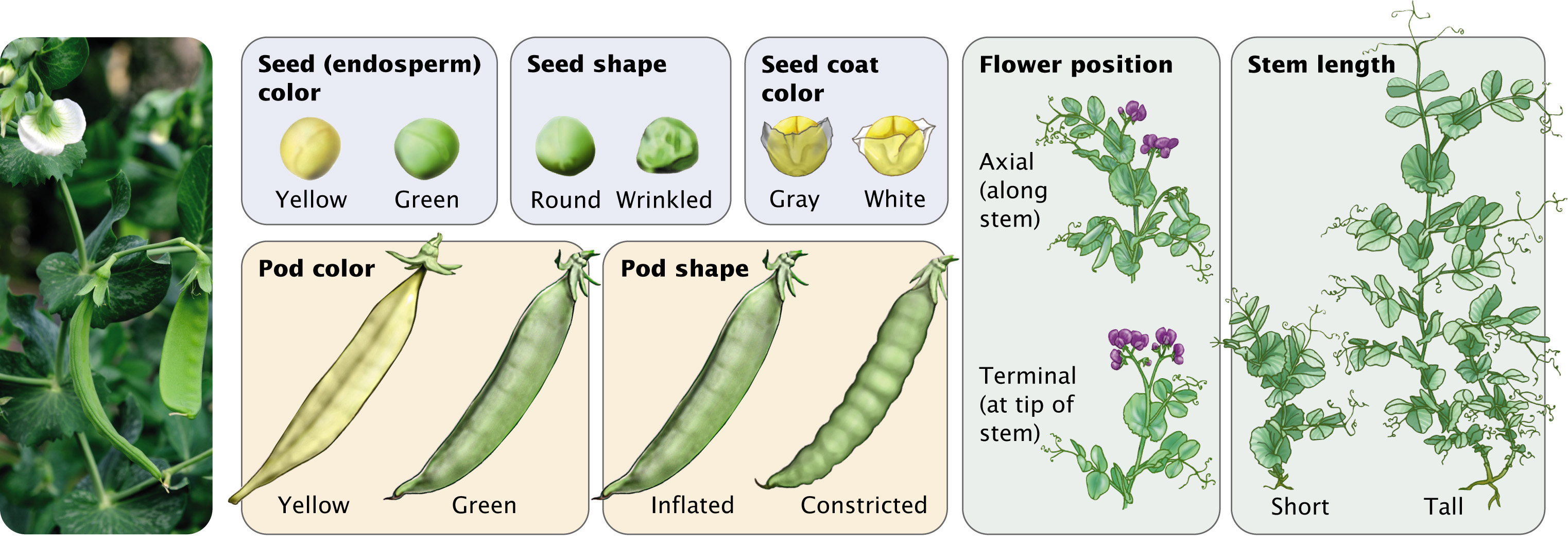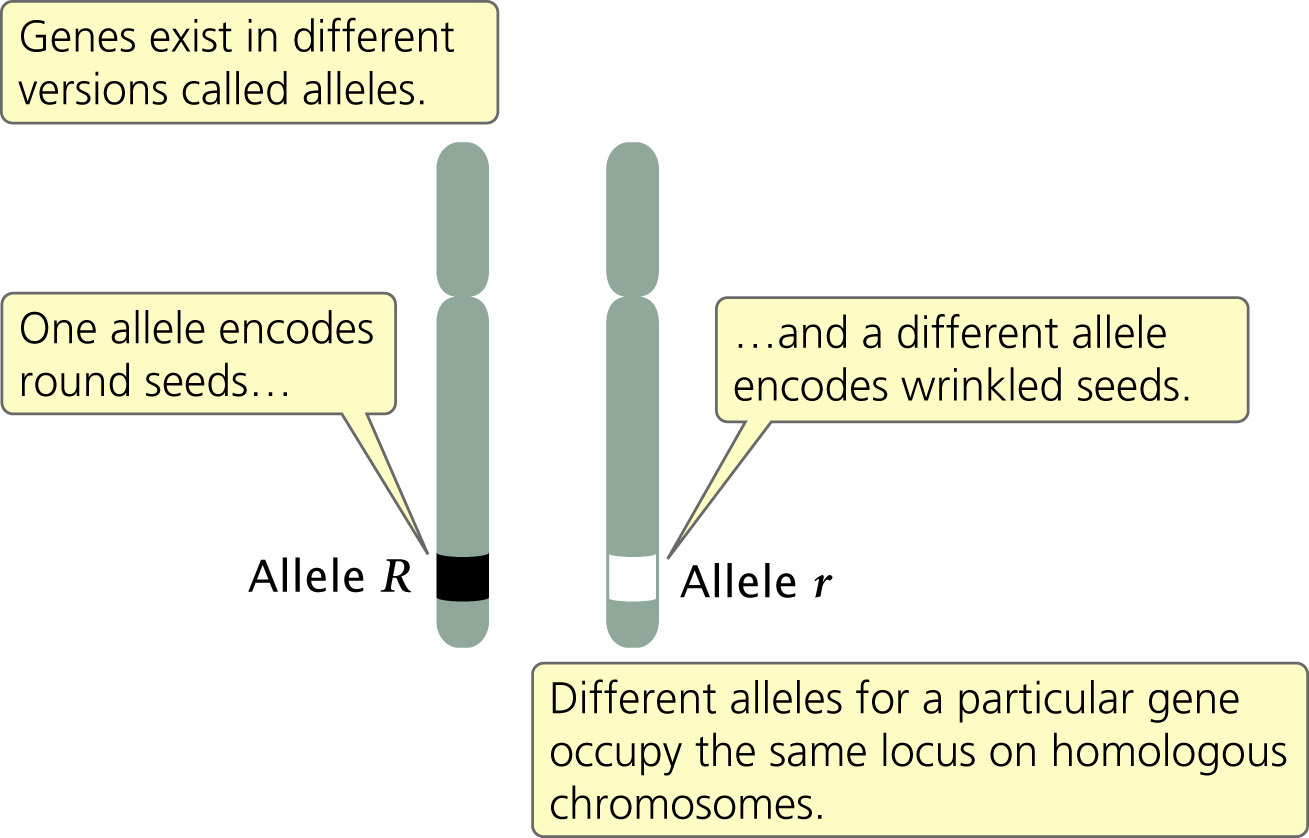3.1 Gregor Mendel Discovered the Basic Principles of Heredity
In 1909, when the Davenports speculated about the inheritance of red hair, the basic principles of heredity were just becoming widely known among biologists. Surprisingly, these principles had been discovered some 44 years earlier by Gregor Johann Mendel (1822–1884; Figure 3.1).

Mendel was born in what is now part of the Czech Republic. Although his parents were simple farmers with little money, he received a sound education and was admitted to the Augustinian monastery in Brno in September 1843. After graduating from seminary, Mendel was ordained a priest and appointed to a teaching position in a local school. He excelled at teaching, and the abbot of the monastery recommended him for further study at the University of Vienna, which he attended from 1851 to 1853. There, Mendel enrolled in the newly opened Physics Institute and took courses in mathematics, chemistry, entomology, paleontology, botany, and plant physiology. It was probably there that Mendel acquired knowledge of the scientific method, which he later applied so successfully to his genetics experiments. After two years of study in Vienna, Mendel returned to Brno, where he taught school and began his experimental work with pea plants. He conducted breeding experiments from 1856 to 1863 and presented his results publicly at meetings of the Brno Natural Science Society in 1865. Mendel’s paper from these lectures was published in 1866. However, in spite of widespread interest in heredity, the effect of his research on the scientific community was minimal. At the time, no one seemed to have noticed that Mendel had discovered the basic principles of inheritance.
In 1868, Mendel was elected abbot of his monastery, and increasing administrative duties brought an end to his teaching and eventually to his genetics experiments. He died at the age of 61 on January 6, 1884, unrecognized for his contribution to genetics.
The significance of Mendel’s discovery was not recognized until 1900, when three botanists—Hugo de Vries, Erich von Tschermak-Seysenegg, and Carl Correns—began independently conducting similar experiments with plants and arrived at conclusions similar to those of Mendel. Coming across Mendel’s paper, they interpreted their results in accord with his principles and drew attention to his pioneering work.
Mendel’s Success
Mendel’s approach to the study of heredity was effective for several reasons. Foremost was his choice of experimental subject, the pea plant Pisum sativum (Figure 3.2), which offered clear advantages for genetic investigation. The plant is easy to cultivate, and Mendel had the monastery garden and greenhouse at his disposal. Compared with some other plants, peas grow relatively rapidly, completing an entire generation in a single growing season. By today’s standards, one generation per year seems frightfully slow—fruit flies complete a generation in 2 weeks and bacteria in 20 minutes—but Mendel was under no pressure to publish quickly and was able to follow the inheritance of individual characteristics for several generations. Had he chosen to work on an organism with a longer generation time—horses, for example—he might never have discovered the basis of inheritance. Pea plants also produce many offspring—their seeds—which allowed Mendel to detect meaningful mathematical ratios in the traits that he observed in the progeny.

The large number of varieties of peas that were available to Mendel also was crucial because these varieties differed in various traits and were genetically pure. Mendel was therefore able to begin with plants of variable, known genetic makeup.
Much of Mendel’s success can be attributed to the seven characteristics that he chose for study (see Figure 3.2). He avoided characteristics that display a range of variation; instead, he focused his attention on those that exist in two easily differentiated forms, such as white versus gray seed coats, round versus wrinkled seeds, and inflated versus constricted pods.
Finally, Mendel was successful because he adopted an experimental approach and interpreted his results by using mathematics. Unlike many earlier investigators who just described the results of crosses, Mendel formulated hypotheses based on his initial observations and then conducted additional crosses to test his hypotheses. He kept careful records of the numbers of progeny possessing each type of trait and computed ratios of the different types. He was adept at seeing patterns in detail and was patient and thorough, conducting his experiments for 10 years before attempting to write up his results.  TRY PROBLEM 13
TRY PROBLEM 13
CONCEPTS
Gregor Mendel put forth the basic principles of inheritance, publishing his findings in 1866. Much of Mendel’s success can be attributed to the seven characteristics that he studied.
 CONCEPT CHECK 1
CONCEPT CHECK 1Which of the following factors did not contribute to Mendel’s success in his study of heredity?
- His use of the pea plant
- His study of plant chromosomes
- His adoption of an experimental approach
- His use of mathematics
Genetic Terminology
Before we examine Mendel’s crosses and the conclusions that he drew from them, a review of some terms commonly used in genetics will be helpful (Table 3.1). The term gene is a word that Mendel never knew. It was not coined until 1909, when Danish geneticist Wilhelm Johannsen first used it. The definition of a gene varies with the context of its use, and so its definition will change as we explore different aspects of heredity. For our present use in the context of genetic crosses, we will define a gene as an inherited factor that determines a characteristic.
Genes frequently come in different versions called alleles (Figure 3.3). In Mendel’s crosses, seed shape was determined by a gene that exists as two different alleles: one allele encodes round seeds and the other encodes wrinkled seeds. All alleles for any particular gene will be found at a specific place on a chromosome called the locus for that gene. (The plural of locus is loci; it’s bad form in genetics—and incorrect—to speak of locuses.) Thus, there is a specific place—a locus—on a chromosome in pea plants where the shape of seeds is determined. This locus might be occupied by an allele for round seeds or one for wrinkled seeds. We will use the term allele when referring to a specific version of a gene; we will use the term gene to refer more generally to any allele at a locus.

The genotype is the set of alleles that an individual organism possesses. A diploid organism with a genotype consisting of two identical alleles is homozygous for that locus. One that has a genotype consisting of two different alleles is heterozygous for the locus.
Another important term is phenotype, which is the manifestation or appearance of a characteristic. A phenotype can refer to any type of characteristic—physical, physiological, biochemical, or behavioral. Thus, the condition of having round seeds is a phenotype, a body weight of 50 kilograms (50 kg) is a phenotype, and having sickle-cell anemia is a phenotype. In this book, the term characteristic or character refers to a general feature such as eye color; the term trait or phenotype refers to specific manifestations of that feature, such as blue or brown eyes.
A given phenotype arises from a genotype that develops within a particular environment. The genotype determines the potential for development; it sets certain limits, or boundaries, on that development. How the phenotype develops within those limits is determined by the effects of other genes and of environmental factors, and the balance between these effects varies from characteristic to characteristic. For some characteristics, the differences between phenotypes are determined largely by differences in genotype. In Mendel’s peas, for example, the genotype, not the environment, largely determined the shape of the seeds. For other characteristics, environmental differences are more important. The height reached by an oak tree at maturity is a phenotype that is strongly influenced by environmental factors, such as the availability of water, sunlight, and nutrients. Nevertheless, the tree’s genotype still imposes some limits on its height: an oak tree will never grow to be 300 meters (almost 1000 feet) tall no matter how much sunlight, water, and fertilizer are provided. Thus, even the height of an oak tree is determined to some degree by genes. For many characteristics, both genes and environment are important in determining phenotypic differences.
An obvious but important concept is that only the alleles of the genotype are inherited. Although the phenotype is determined, at least to some extent, by genotype, organisms do not transmit their phenotypes to the next generation. The distinction between genotype and phenotype is one of the most important principles of modern genetics. The next section describes Mendel’s careful observation of phenotypes through several generations of breeding experiments. These experiments allowed him to deduce not only the genotypes of the individual plants, but also the rules governing their inheritance.
CONCEPTS
Each phenotype results from a genotype developing within a specific environment. The alleles of the genotype, not the phenotype, are inherited.
 CONCEPT CHECK 2
CONCEPT CHECK 2What is the difference between a locus and an allele? What is the difference between genotype and phenotype?